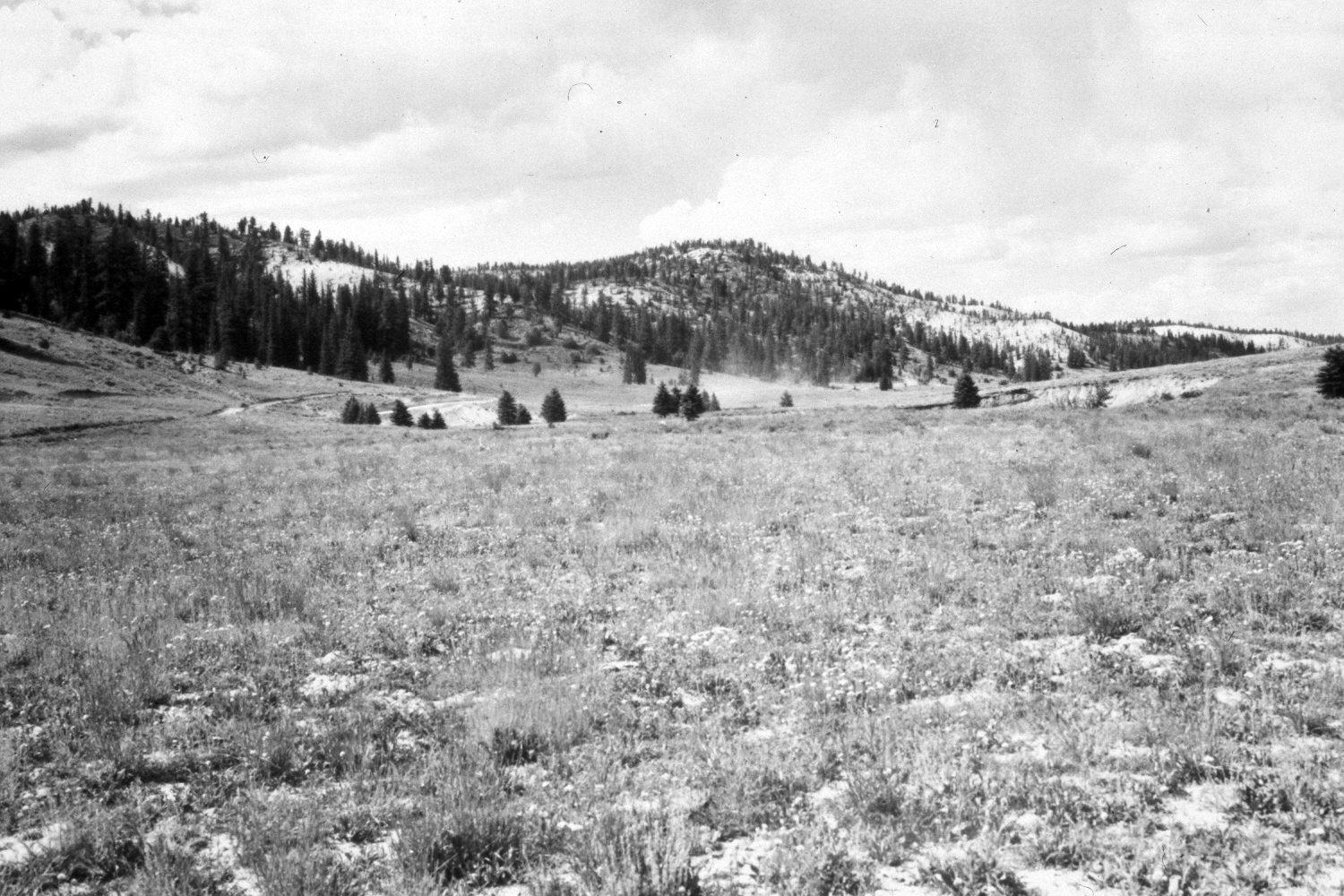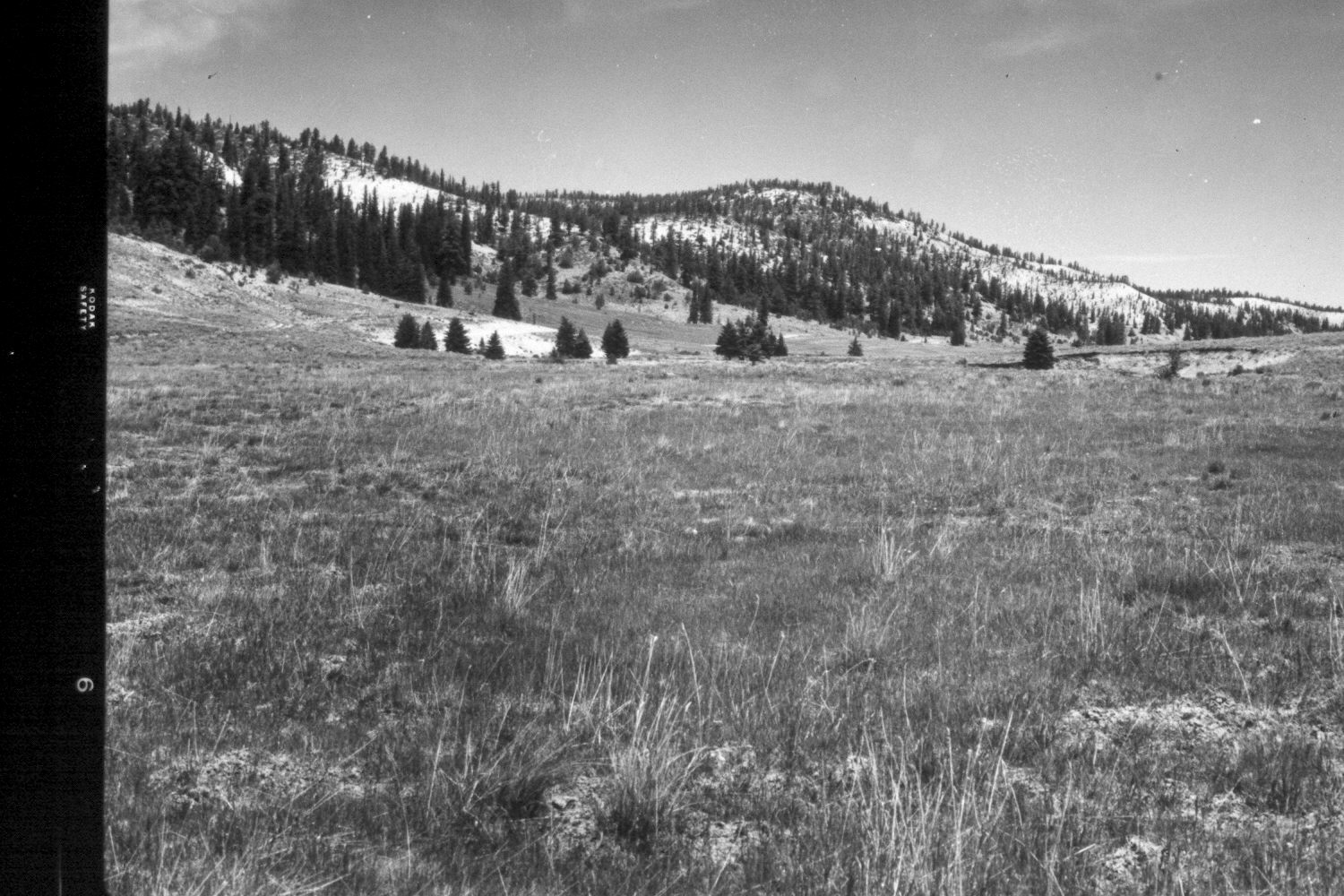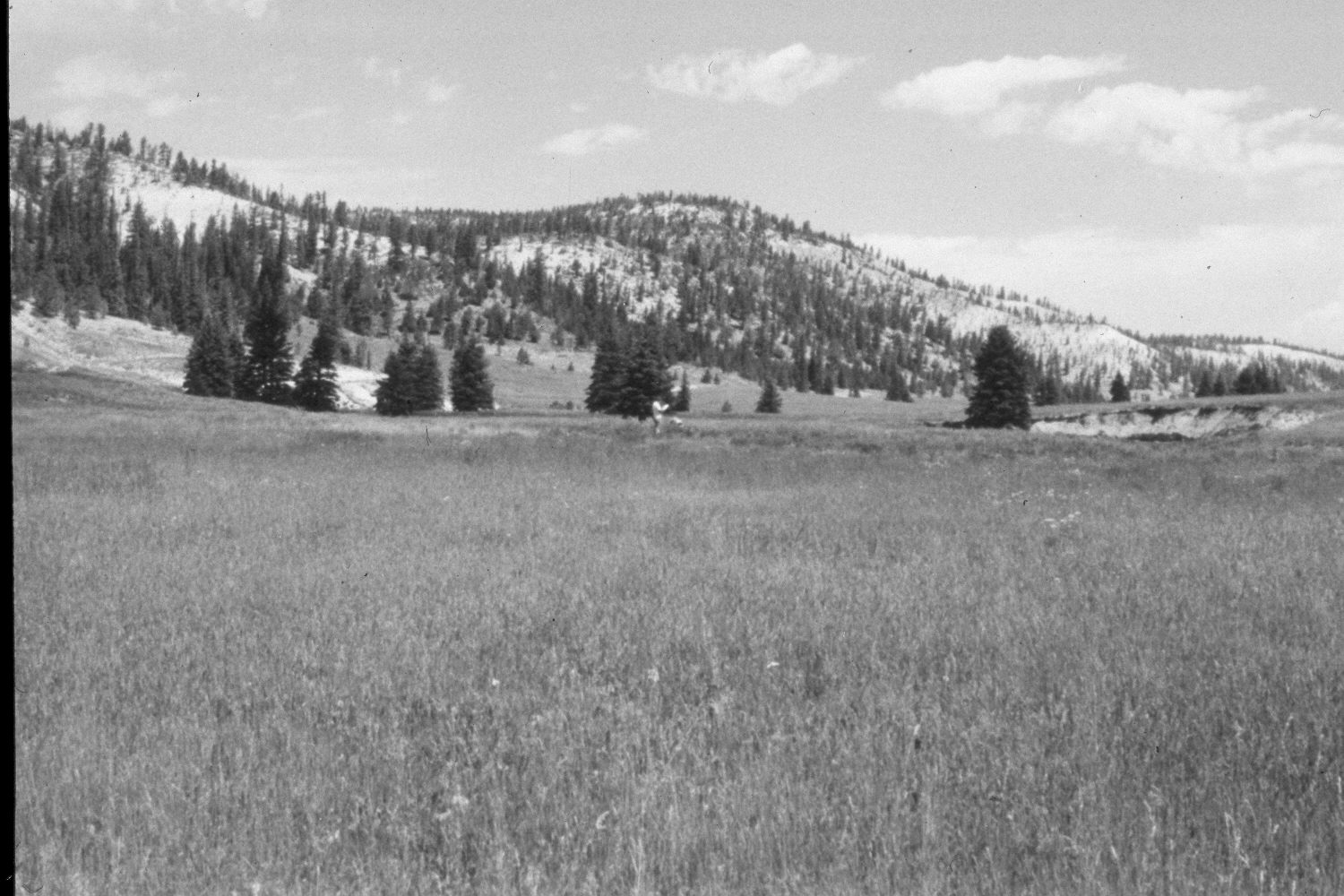East Fork Of The Sevier River
1948

1953

1979

Description:
Plate 265X. East Fork of the Sevier River 1948 – 1953 – 1979 – 2003 The East Fork of the Sevier River Photo Plot Transect was established in 1943, and re-read in 1948, 1953, 1961, and 1979. Two plot-lines were set-out from a common starting point approximately one-half mile north of Blubber Creek. The first line runs in a southwesterly direction for 1200 feet, while line two runs in a southeasterly direction for 600 feet. According to the 1943 narrative report, the area was once a wet meadow but as the East Fork eroded and down-cut 5 to 7 feet “the plants growing there have died out and Artemisia, Gutierrezia, Chrysothamaus, and Kochia have come in. Much of the area is still entirely barren [from overgrazing] or has valueless weeds growing on it.” Willows were described as having once been abundant along the stream, but most were killed-out by repeated browsing and the lowered watertable. Heavy grazing had “obliterated” most native grasses and the hillsides were described as “severely eroded”. In 1961, “Fresh alluvial deposits [were] common [and] drainage ways [had] deepened.” By 1979, however, “the area [showed] tremendous improvement” after much of the East Fork had been reseeded by the Forest Service during the early 1960s (unpublished reports in the range files on the Panguitch Ranger District, Dixie National Forest, Panguitch, UT). Plate 265x is viewed northwest from the end of the second line back to the Photo Plot Transect starting point near the spruce trees in the distance. The East Fork of the Sevier River is on the right, while the East Fork Road is visible on the left - - that road has been realigned in the 2003 retake and the old roadway revegetated. Most of the meadow is now covered with Kentucky bluegrass, a non-native species. Spruce, ponderosa pine, and juniper have all increased. The low-growing shrubs in the meadow are primarily shrubby cinquefoil and rubber rabbitbrush, while sagebrush is common on the drier hillsides. Range conditions have improved, despite the drought that has gripped southern Utah for several years. The area had not been grazed by livestock in 2003 when the transect was rephotographed.
Photo Information
U.S. Forest Service photographs (unnumbered) taken by Walter Cottam on July 15, 1948; I.H. Johnson on June 18, 1953; I.H. Johnson on August 16, 1961; and Jim Bowns and Al Tait on July 17, 1979; retake by Charles E. Kay on August 6, 2003 - - Photo No. 5218-11A. Original photographs, negatives, and narrative reports held in the range files on the Panguitch Ranger District, Dixie National Forest, Panguitch, UT.
Vegetative Community:
Dry Meadow, Conifer, Juniper, Sagebrush
Location:
South West: Section 25, Range 4½ West, Township 37 South; UTM of transect starting point 387350E, 4157100 N; elevation 7,120 ft.


 Utah 4-H & Youth
Utah 4-H & Youth